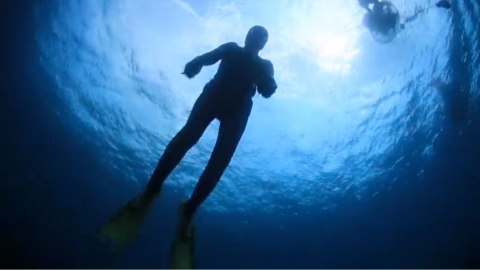tonight restoring the damage caused by
climate change the once lush atlantic
white cedar forests along new jersey's
coastline are now pale in color and
barely surviving due in large part to
rising sea levels and increasing storm
surges rushing salt water into fragile
freshwater ecosystems leaving behind
what experts dubbed ghost forests as ted
goldberg reports the state is now
engaged in the largest restoration
effort for this tree species
in the nation it's part of our ongoing
series peril and promise focusing on the
human stories of climate change
atlantic white cedars tower over the
Brendan T. Byrne state forest new
jersey's department of environmental
protection wants to keep it that way for
a long time my kids will will go there
in their old age and see what you're
seeing today i think things will break
our way right because we're putting the
investment in the planning and the
preparedness forward to identify the
places where it like atlantic white
cedar can thrive as we re-establish it
it takes about a hundred years for the
atlantic white cedars to grow to be this
tall and along the way there are a lot
of dangers that can cause them to die
out in large groups and become part of
what's known as a ghost forest basically
dead trees
and oftentimes they
they're standing dead
and they
weather or decay slowly and so you end
up with these gray you know barkless
trees that can lathrop co-authored a
study that looked at why we're seeing
more of these ghost forests he says it's
likely because of higher sea levels and
flooding from storm surges as the sea
levels rise the
groundwater
underneath the land also rises and so as
it gets closer to the surface it starts
to
basically
saturate the soils and so a number of
tree species
can't live in situations where there's
you know super saturated
soils which include atlantic white
cedars new jersey used to have 125
thousand acres of them now it's closer
to 25 000 thanks to human activity and
natural factors like this beaver dam
we need to create enough resiliency in
the system for beavers to exist for
wildfires to occur
just for natural mortality so that's why
it's so important that we put it back on
the landscape put it in different places
so that we can have some spots the
beaver's going to impact but we can also
have places that will continue to thrive
the dep is spending 19 million dollars
to try and restore 10 000 acres of these
trees
bill zipsee says he's seen a lot of
progress in his 22 years on the job you
could stand here and see across these
trees and see all the way down to the
next road and where the pine stand was
so you it was the trees were maybe this
this tall you know about up to my my
belly
uh now they're you know 30 feet tall 35
feet tall so
and there were
you know now there's probably over 5000
trees per acre on this site it is a
special forest when you go see it
it's beautiful bob williams is a
professional forester who has been
critical of the dep in the past he likes
their plan to bring back the cedars and
wishes it went a step further
we need to address the adjacent
fire hazard
of the upland pine forest
it doesn't make any sense to spend 19
million dollars
successfully restoring the special
ecosystem
and then have it burned up
which could happen
williams knows that these trees won't
grow to their potential in his lifetime
he's thinking beyond that
you're doing something for generations
to come
so that's so that some school class 100
years from now goes out there
they'll have a video
and have an appreciation for what forest
management is
and an appreciation for cleaner water
the root structure of these trees
provides an incredible water quality
benefit which for the people of the
southern part of the state and western
parts of the state that don't have large
water systems carrying their drinking
water they are relying upon these trees
to clean the water that they
drink and bathe in and feed their kids
every day
it's a tall task for the state trying to
help these trees grow past obstacles
both man-made and natural
for nj spotlight news i'm ted goldberg
lead funding for peril and promise is
provided by dr p roy vagalos and diana t
vagalos major support is provided by the
mark haas foundation and sue and edgar
Wachenheim III and theCheryl and Philip
Milstein family
[Music]



